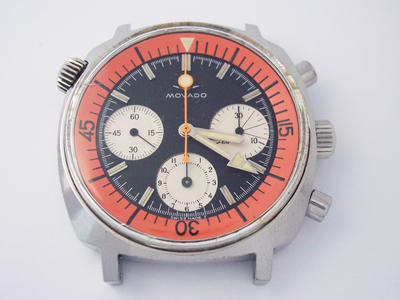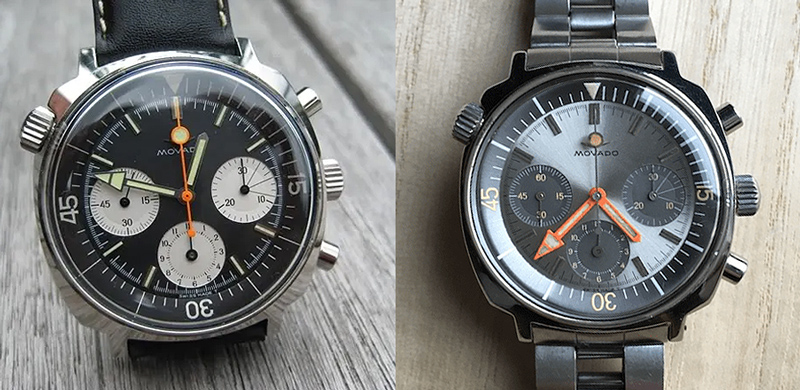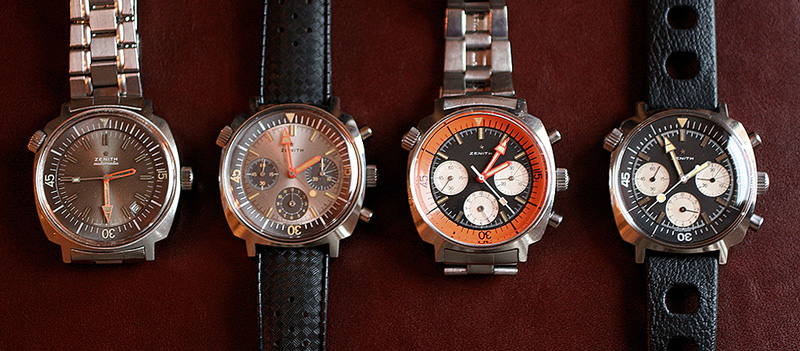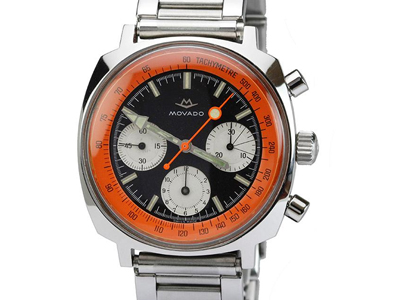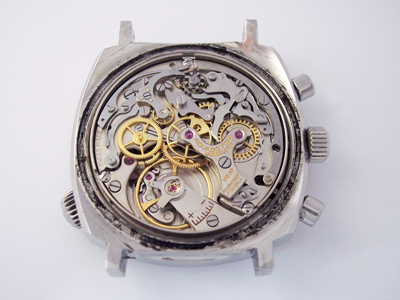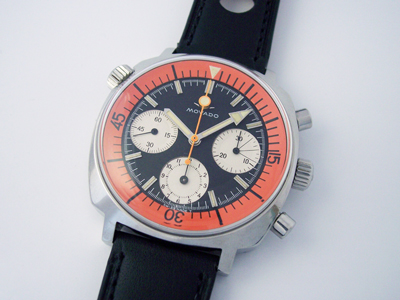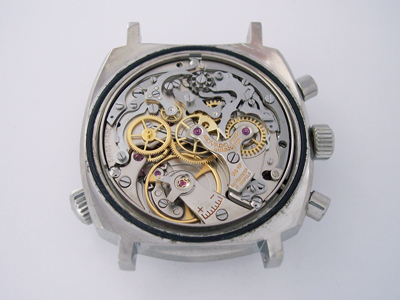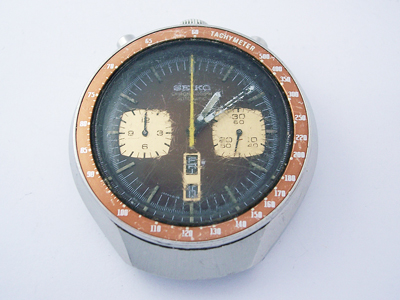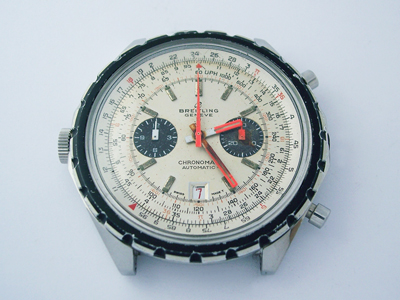If you are a fan of vintage chronographs then you’re in for a treat as this one is a beauty, a Movado Super Sub Sea.
(Click pictures to enlarge)
Now one of the rarest and most desirable of Movado’s vintage chronographs, the Super Sub Sea was introduced in the late 1960’s. During this period Movado was owned by the Mondia-Zenith-Movado holding company which allowed parts to be shared across the group. Consequently, near identical models were offered with either Movado or Zenith branding on the dial.
The Super Sub Sea chronograph is one such model which was marketed by both companies and was produced in three colour combinations; the black dial/orange inner bezel seen here, a grey/black combination and an all black version.
In the Zenith range there was also a regular diver’s watch included, but there was no Movado branded version of that model to my knowledge. There were several other Sub Sea divers in the Movado range, but not in the same style.
To make things a little more confusing, Movado also offered a near identical version of the same chronograph, but without the internal “dive timer” bezel operated by the second crown at 10 o’clock. It was fitted instead with a more traditional, fixed ‘tachymetre’ scale.
Inside all these chronographs is the same calibre, the Zenith cal. 146 HP; a 17 jewel, manually wound, 3 register, column wheel chronograph with a beat rate of 18,000 bph. Zenith acquired Martel Watch Company S.A. in 1960, who had developed and were producing the cal. 146 HP, along with the cal. 146 DP, a 2 register version of the same calibre. Zenith-Movado continued to use these calibres in the majority of their manually wound chronographs until the introduction of the first automatic chronograph calibre, the cal. 3019 ‘El Primero’, in 1969. From that point onwards, Zenith-Movado phased out all manually wound chronographs from their future ranges, opting for automatic models only.
You’ll notice in the picture above that there was quite a bit of dirt and pitting around the recess for the caseback gasket. This is unfortunate, but quite a common sight with vintage watches and is caused by leaving the caseback gasket in place for too long (read: decades!) As the gasket hardens over time, moisture seeps into the gaps between the gasket and the case, corroding areas of the steel to give a pitted result. If left unchecked moisture will eventually breach the gasket and damage the movement, and/or the dial and hands. Thankfully that wasn’t the case here.
What wasn’t immediately obvious (though is visible in the first picture if you look closely), is that the crystal fitted was in pretty poor shape too. It was cracked in several places around the base and dirt/moisture had seeped into the cracks, so replacing it was the only option. Thankfully the new owner had done the ‘hard yards’ on this one by sourcing a NOS original crystal to send in with the watch, as they are very thin on the ground these days.
There were no mechanical issues this time and no cosmetic work needed, so after a routine movement service and with the case cleaned and a new crystal and caseback gasket fitted, the watch could be rebuilt, ready for active duty again.
Rich.
** Many thanks to Daniel Spiegel for letting me feature his watch on the blog. **

